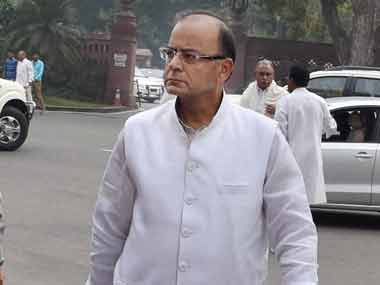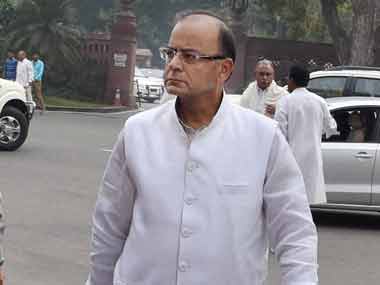Global rating agencies have stepped up pressure on finance minister Arun Jaitely as he is readying to present the NDA government’s first full budget on Saturday. There are clear warnings from raters with respect to the fragile fiscal scene of the government. If the budget fails to offer a solid roadmap on the much-needed fiscal reforms, that can be a huge turn off for rating assessors and, can, in turn result in outlook revisions and rating downgrades. Any possible rating downgrade would mean adverse impact on the prospects of local companies — something that can push up the risk perception on these companies and, thus, their borrowing costs in the global markets. [caption id=“attachment_2121249” align=“alignleft” width=“380”]  If Arun Jaitley’s budget fails to offer a solid roadmap on the much-needed fiscal reforms, that can be a huge turn off for rating assessors[/caption] Global raters, Standard and Poor’s (S&P) and Moody’s Investor Services, have already sounded caution on India’s strained fiscal discipline saying it is critical for the government to offer clarity on budget on the reform roadmap to ensure that the government is indeed in control of its finances. The latest warning has come from Moody’s, which, on Wednesday, said the agency’s rating assessments would heavily depend on the budget outcome, especially, how the Modi government would want to take ahead the fiscal reforms in Asia’s third largest economy. “Fiscal and structural reform policies will determine the extent to which accelerating growth will buttress the sovereign credit profile,” the agency said. S&P too have offered a similar warning. Recently, the agency said India’s weak fiscal and debt indicators, coupled with the low income levels, “constrain” the sovereign rating. “India’s low income levels and weak fiscal and debt indicators constrain the country’s credit profile,” S&P said in a note. In short, the government’s maiden full budget is loaded with high expectations on some credible steps enough to convince the investors and raters about its commitment on managing the fiscal scene. This will make things particularly difficult for the government, which has, on one side, the burden of fulfilling the promise of gradual reduction in fiscal deficit and simultaneously pushing growth through increase in public spending, on the other hand. The government has a fiscal deficit target of 4.1 percent in the current fiscal year. Clearly, rating agencies are not amused by the recently released re-based GDP numbers, which projected the economy to grow at 7.4 percent in the fiscal year 2015. “ “The upward revisions of India’s GDP (gross domestic product) growth based on methodological and base year updates—highlight the strength of the economy, but do not impact Moody’s overall assessment of the sovereign’s credit profile,” Moody’s said. As Firstpost has pointed out before, the high growth numbers according to the revised base, isn’t a convincing number to many on account of the reality on the ground as indicated in the muted credit growth numbers and slow expansion of manufacturing and financial services. The bottomline is that if the budget falls short of expectations in terms of meaningful steps to reform the fiscal front, the government runs the risk of facing the heat from global raters. This can prove costly to the local firms in the form of heightened risk perceptions on these firms and corresponding increase in their borrowing costs.
A rating action will prove costly for local firms in the form of heightened risk perceptions and corresponding increase in their borrowing costs
Advertisement
End of Article


)

)
)
)
)
)
)
)
)



